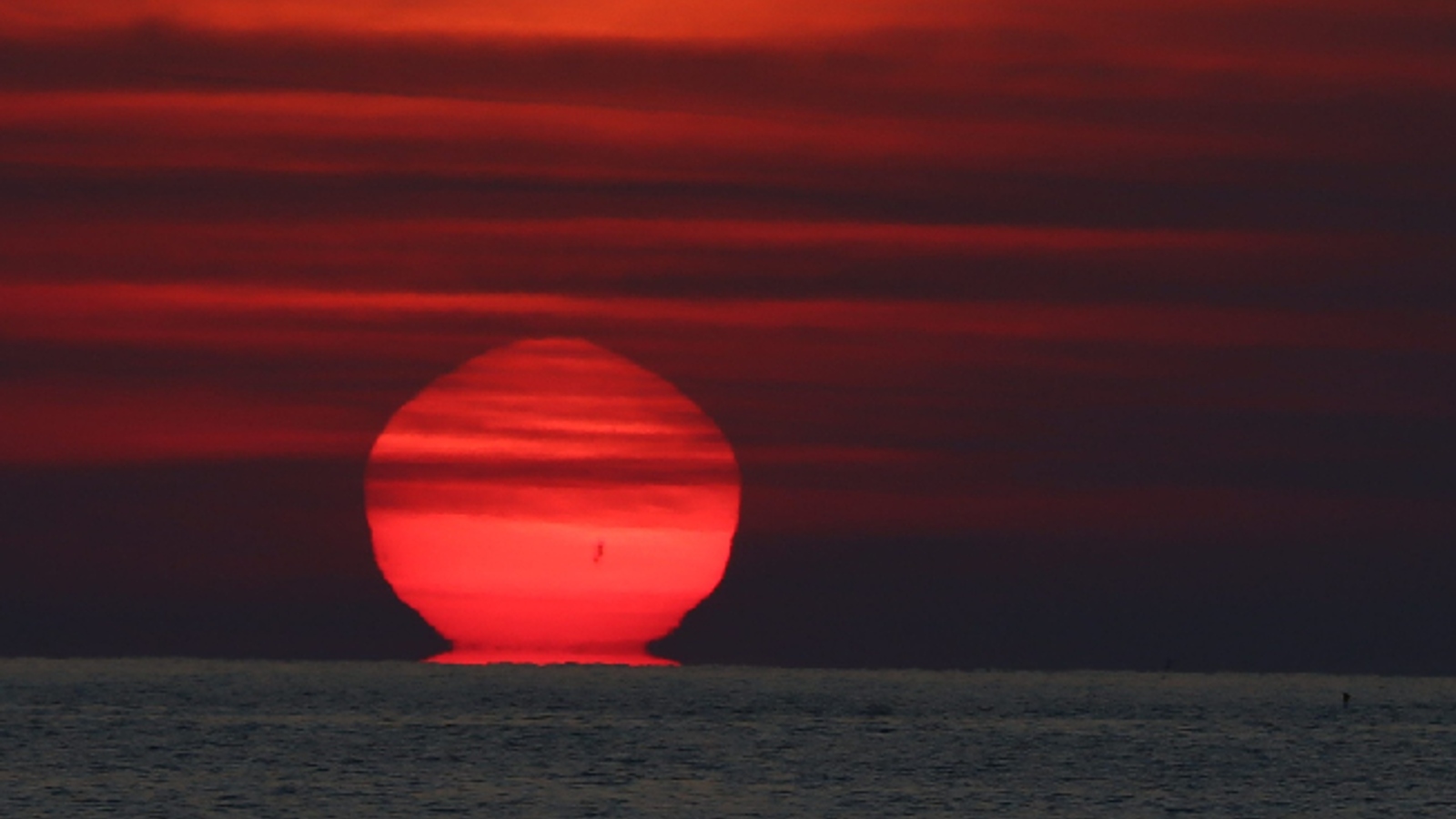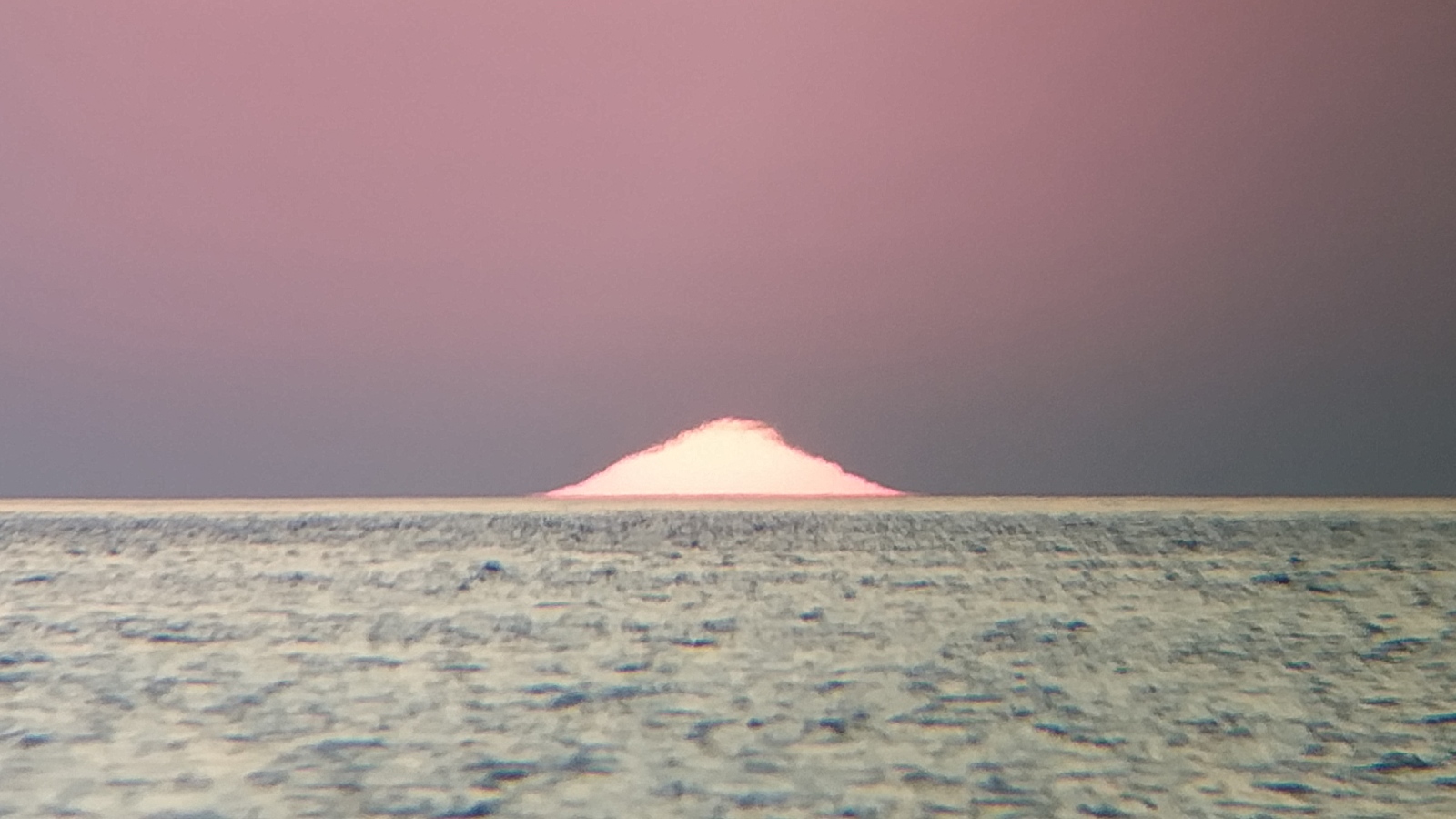Rising and setting 'Omega sun' melts into a 'lava-like blob' in trippy mirage photos
In back to back days, the sun appeared to melt into the horizon due to a trippy optical illusion called the "Omega sun."
Photographers in the Mediterranean recently captured stunning images of the sun appearing to melt toward the horizon as it set one day and then rose again the next day, creating trippy "lava-like blobs" in the sky.
On both occasions, an enormous sunspot was also clearly visible on the warped sun's surface.
On July 11, photographer Martin Gembec captured shots of the oozing sun from the island of Korčula in Croatia as the seemingly deformed star began to set behind the Adriatic Sea. Then on July 12, photographer David Marshall saw the same effect as the sun rose above the Adriatic Sea, but this time from the Italian coastline near San Benedetto del Tronto.
The rare phenomenon is known as the "Omega sun" — named after the Greek letter, which has a similar shape to the warped sun that stretches down and then out, according to Spaceweather.com. It is a type of "inferior mirage," which is caused by differences in air temperature above the water's surface. The effect is also dubbed the "Etruscan vase" due to the similarities between the shape of the warped sun and pottery made in what is now Italy between the 7th and 5th centuries B.C..
The images by Gembec (seen above) are only a partial Omega sun because the setting sun does not touch and spill out across the horizon. Marshall's photo (seen below) shows the phenomenon in its entirety as the sun rises from behind Earth's curvature.
Related: Ethereal 'halo' and light arcs around the sun captured in photos of ultra-rare phenomena
Inferior mirages are created when the ocean's surface, and the air just above it, is much warmer than the air further above the surface. The temperature difference causes light from an object (in this case the sun) to bend upward toward an observer, which counterintuitively creates a second inverted image of the object underneath, according to San Diego State University. So during an Omega sun, the bottom part of the sun is essentially being reflected by an invisible mirror. (The same mirage can also sometimes warp the moon in a similar way if it is near the horizon.)
Get the world’s most fascinating discoveries delivered straight to your inbox.
As the sun sets, the last part of the sphere that dips below the horizon can also be warped into a triangle, making it look more like a pyramid (see below).
The opposite of an inferior mirage, known as a superior mirage, is created by reverse conditions, where the temperature higher above the ocean is warmer than the air just above the water’s surface. This can cause objects, such as large boats, to appear as if they are levitating above the horizon.
The successive sightings of Omega suns in the Mediterranean may be linked to an extreme heatwave in Europe, which has caused temperatures to skyrocket to near-record levels for more than a week, according to the BBC. This excess heat could have been absorbed within the first few feet of the ocean's surface, which would cause the air around it to remain warm as temperatures cooled overnight.
In both images, a large sunspot, named AR3363, is clearly visible. On July 15, AR3363 spat out a cloud of fast-moving magnetized plasma, known as a coronal mass ejection (CME) that combined with another CME to form a "cannibal CME," which slammed into Earth on July 18.

Harry is a U.K.-based senior staff writer at Live Science. He studied marine biology at the University of Exeter before training to become a journalist. He covers a wide range of topics including space exploration, planetary science, space weather, climate change, animal behavior and paleontology. His recent work on the solar maximum won "best space submission" at the 2024 Aerospace Media Awards and was shortlisted in the "top scoop" category at the NCTJ Awards for Excellence in 2023. He also writes Live Science's weekly Earth from space series.





